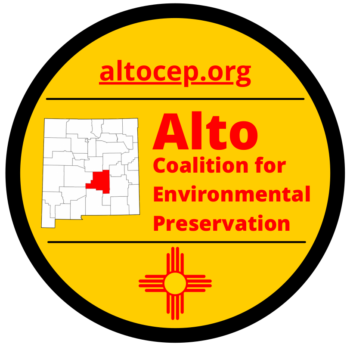Community, “Smart Growth”, An EPA Administrator and Judge Sugg
By the Alto CEP
It has now been three years since a local contractor purchased the commercial property on State Highway 220 to the east of the State Highway 48 intersection. At that time an area resident inquired as to the use of the property and the response was “for storage,” a response similar to the intended use by a previous property owner who decided to sell and find a more economically feasible location. When informed of the deed restrictions prior to signing for the two properties, the contractor ignored them, signed the legal paperwork, and took possession knowing he would build a concrete batch plant on the site. Three months later (May, 2021) the required New Mexico Environment Department posting indicated the actual proposal and any objections needed to be filed immediately. About two thousand area residents responded in opposition to the location of the proposed concrete batch plant and NMED publicly admitted that the resulting pushback was the largest in its history. NMED denied the permit request. The denial was appealed and the case is ongoing.
When residents presented their objections to the Lincoln County Commissioners in the June, 2021 meeting, the Commission chose to not protect the environmental well-being of the people of District Four and disregarded the county’s Comprehensive Plan currently in place which states in part that “Smart growth … need(s) to (involve) community choices.” (emphasis Alto Coalition of Environmental Preservation). Residents of the fourteen corridor 220 communities (a.k.a. The Billy the Kid National Scenic Byway) were never consulted and the contractor ignored the civil rights of the more than 140 residents living in the Environmental Protection Agency’s defined “sacrifice zone.”
Dr. Earthea Nance, a distinguished college professor at Texas Southern University, is the EPA’s Region Six Director which oversees NMED’s jurisdiction. The Public Relations Coordinator for NMED chose Dr. Nance as the subject for an interview in March, 2023 to celebrate Women’s History Month and Earth Day.
During the interview, the interdisciplinary scholar was questioned about her thoughts concerning environmental justice. Dr. Nance outlined what she considered as necessary to achieve an equilibrium of environmental community fairness which included: one, partnerships with communities by creating long term trusts, and two, striving for better protection.
At five minutes into the interview, she stated that to facilitate the change an interdisciplinary approach should bring “different disciplines to bear going beyond engineering and science (and) really look at the social sciences.” Dr. Nance added that “Traditional … engineering misses training in how to communicate with everyday people, how to translate engineering knowledge into ways people can understand and to take action on it.”
About a minute later, Dr. Nance further states that when “industry” invades residential areas, the governing bodies need to calculate the risk and impact to communities, “No one has actually calculated what that risk is before and after the project ….” Nor has “economic analysis studying the benefits and cost to the community” been researched to include the “impact to the community.” NMED was in full agreement with Dr. Nance’s statements. The contractor ignored the concerns of his neighbors and Judge Sugg never considered the residents in his 81 page denial of the Preliminary Injunction against the contractor.
On the surface it may be argued that the contractor has fulfilled his legal obligation with the filing of an “air quality” permit but negotiating the engineering intricacies presents an environmental situation that ignores the well-being of people. When Dr. Nance was asked by NMED what does environmental justice mean to you? Her response (at 2:58 into the interview) was direct: “To me, environmental justice means that there are no sacrifice zones.”
Curiously, the interview with Dr. Nance has since been removed from NMED’s YouTube Channel. An audio only version of the interview can be downloaded by clicking this link. The You Tube video of the interview can be seen here (due to the large file size video loading time may take 60 seconds or longer).
It does seem ironic that one month after this interview the contractor broke ground, started building the proposed Alto concrete batch plant, and physically created the Alto sacrifice zone affecting more than the aforementioned 140 residents. And it is on record that the contractor and his lawyers stated that there would be no construction until the litigation is resolved. As one Commissioner stated, being on record doesn’t make one accountable.
The Lincoln County Comprehensive Plan is very clear in its statements that protect the well-being of communities and supports “smart growth” within those communities. When were the civil rights of communities usurped for the economic gain of one entity? When the Lincoln County Commission ignored the well-being of its District Four constituency, deferred responsibility, and told the objecting residents to “get a lawyer.”
